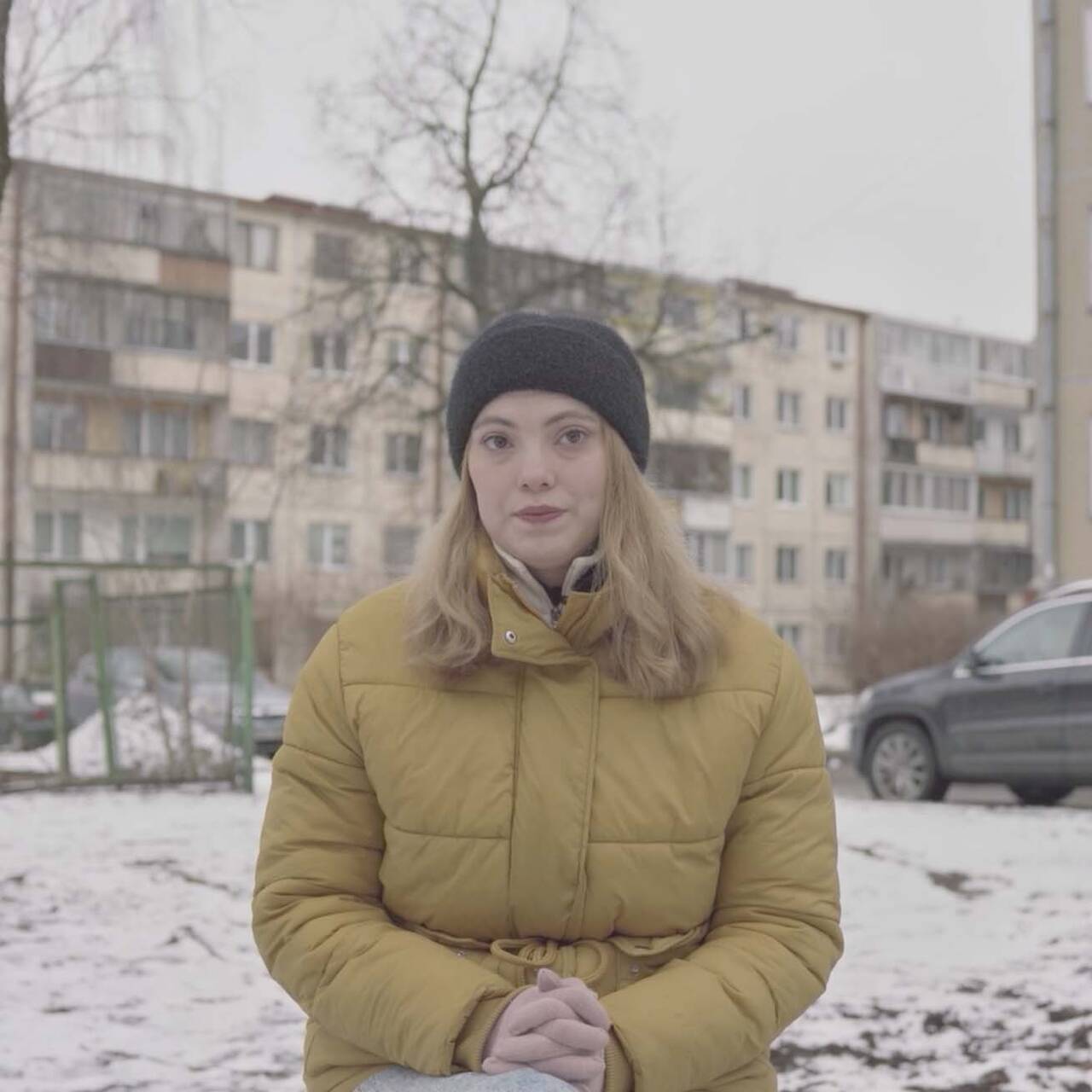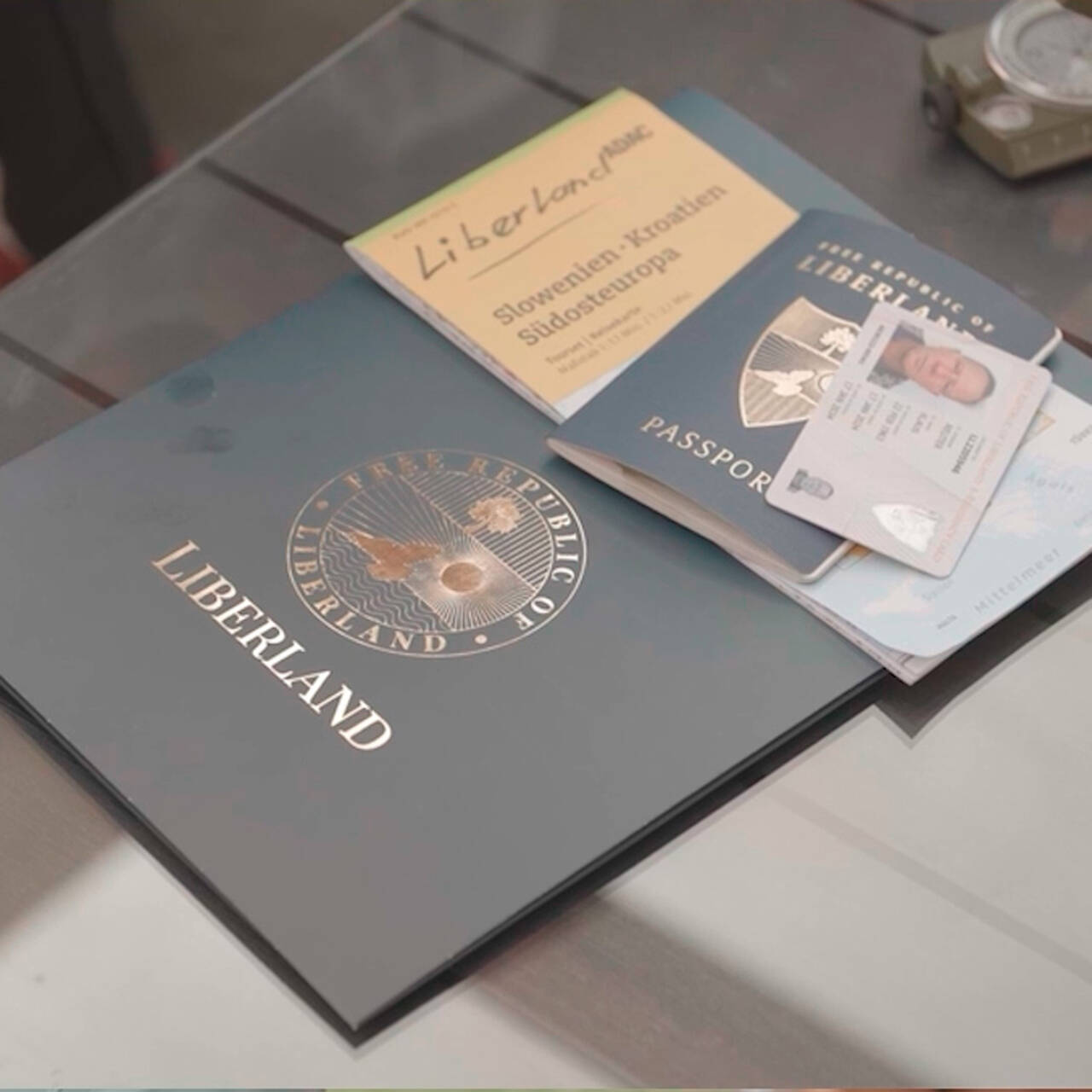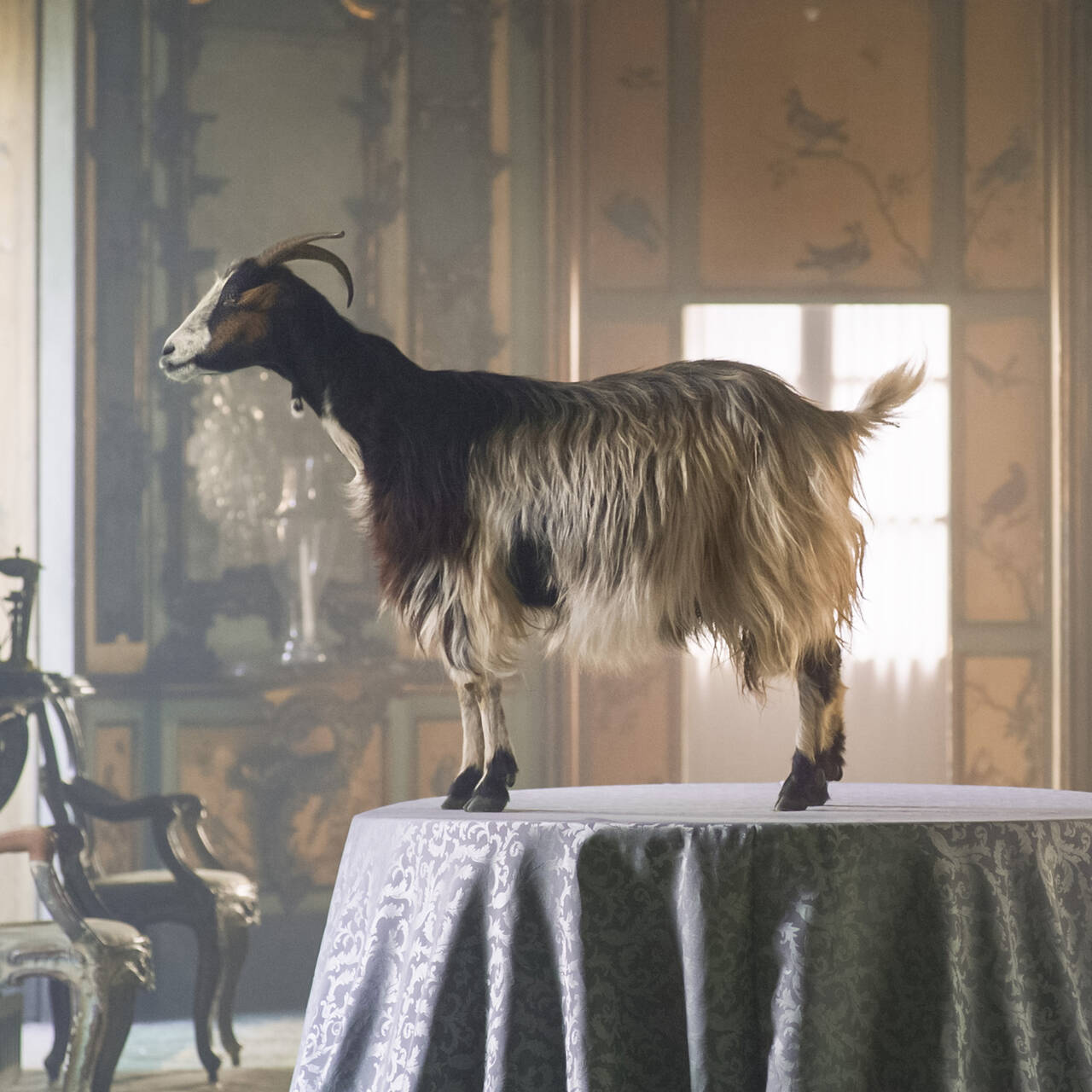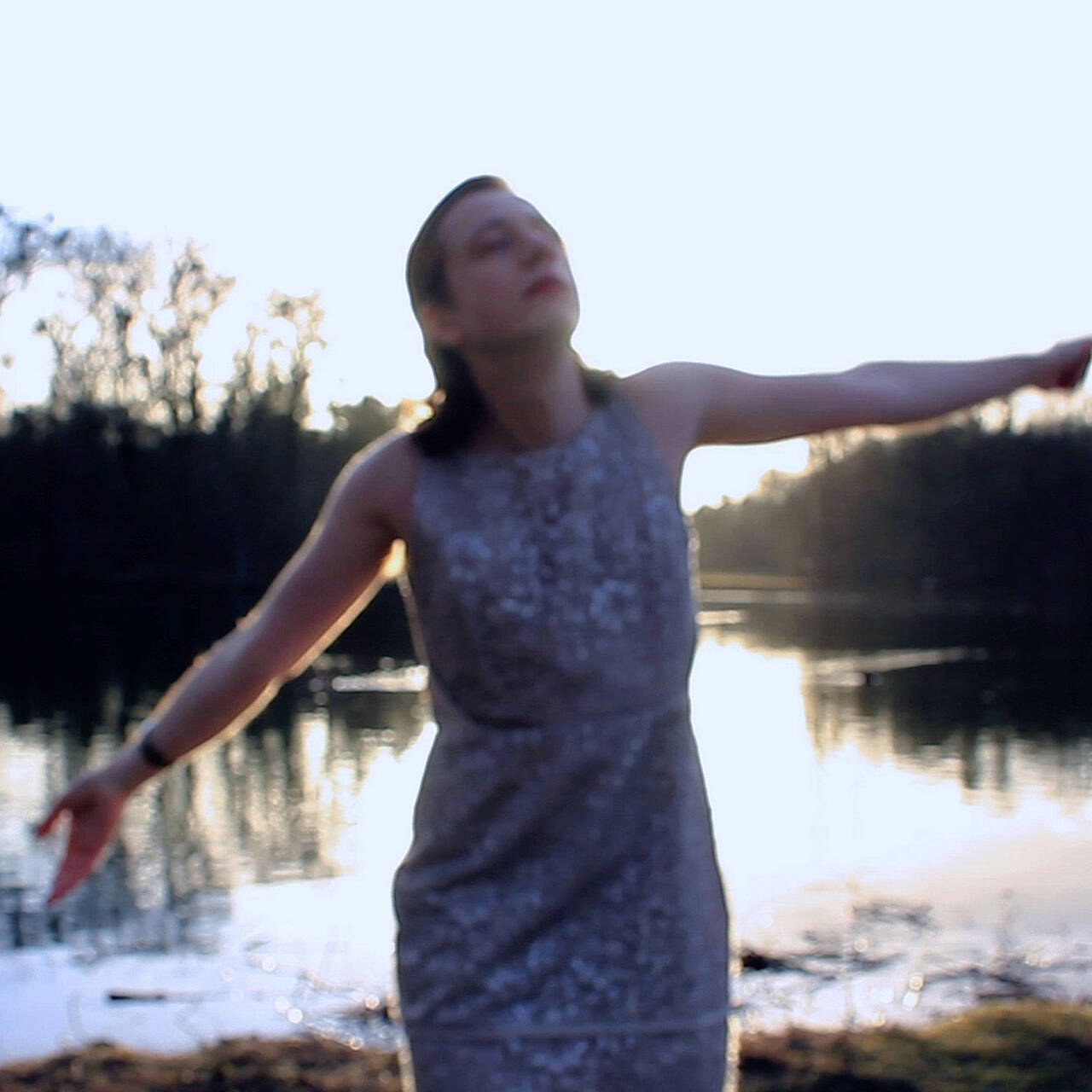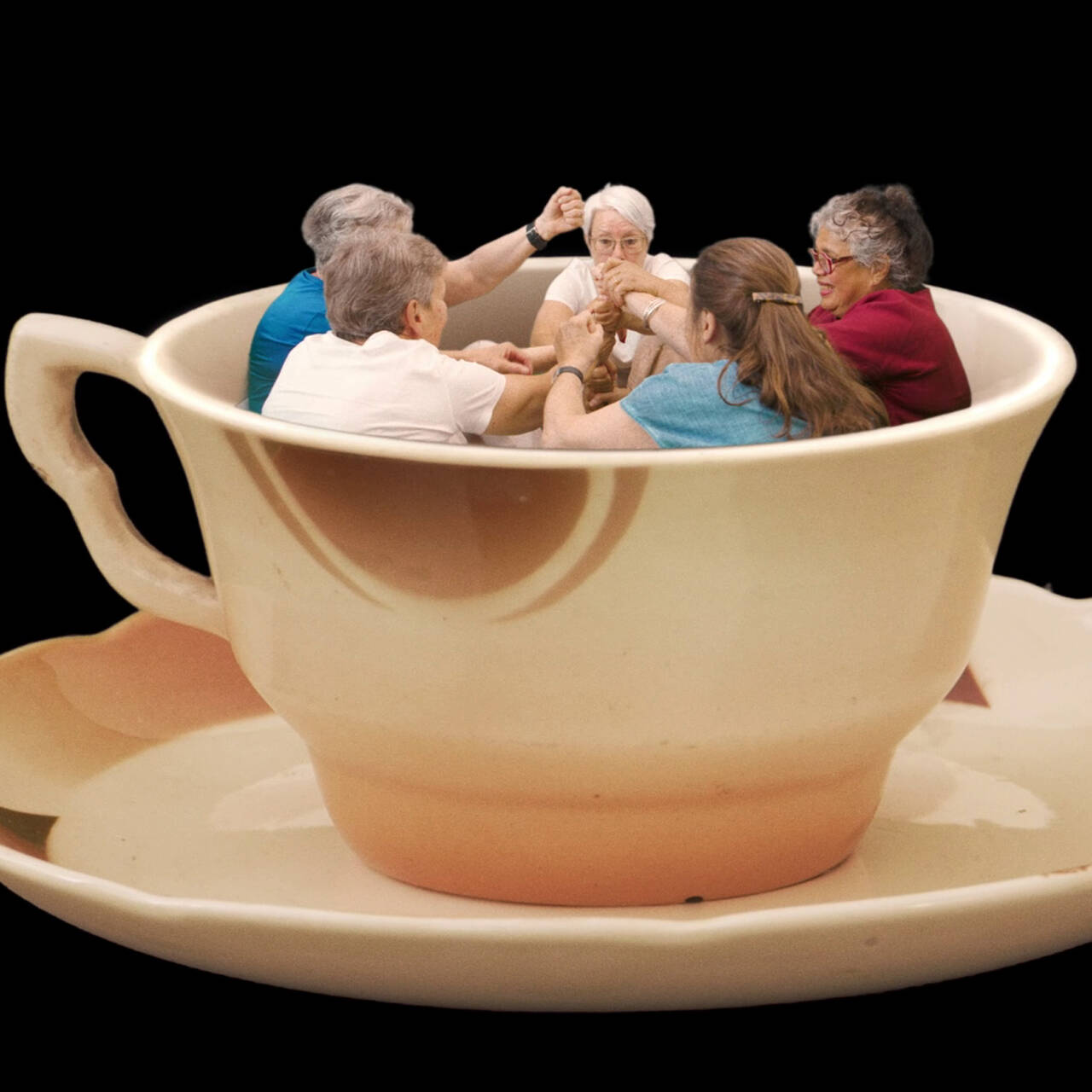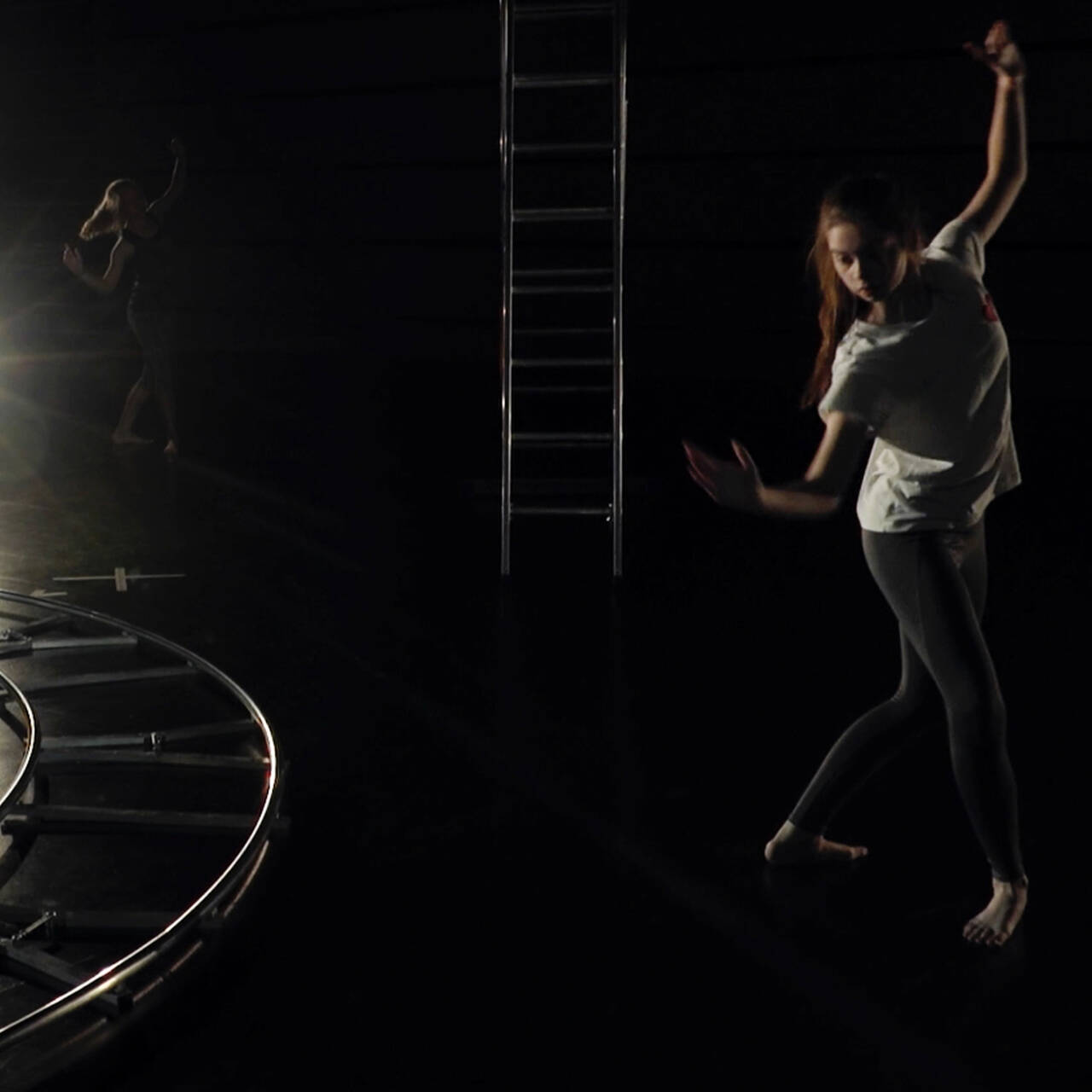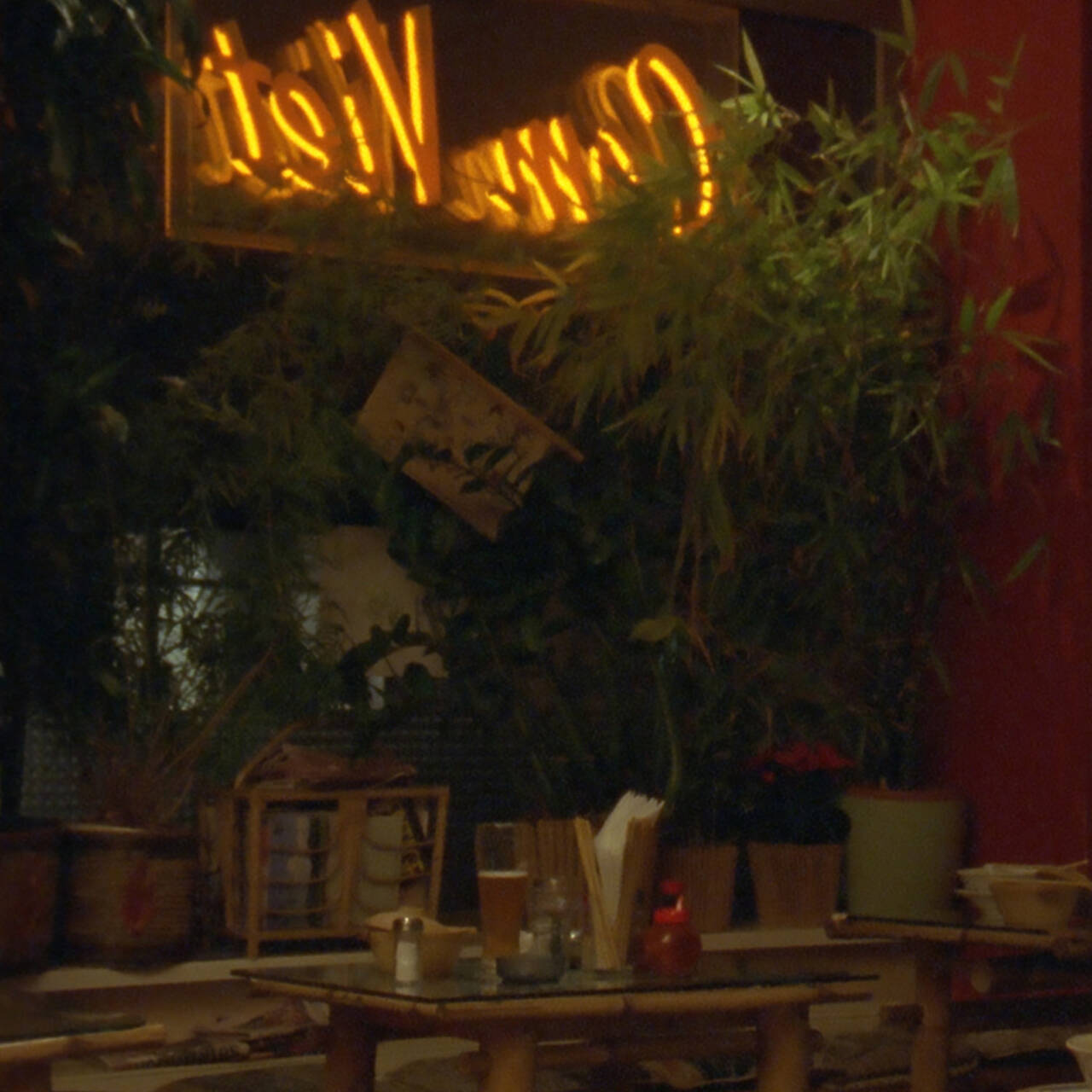What happens in that moment before the brush touches the blank canvas? Among other things, the artist Su-Mei Tse deals with this question in her film “Pays de Neige”.
At the beginning there is static noise, an even surface that fills the screen so the viewer is not entirely sure whether it’s a freeze-frame or an almost imperceptibly moving mass. The soundtrack also seems to be a kind of static – or is that actually a rustling, a kind of order-setting rhythm? It is only after a good 18 seconds of Su-Mei Tse’s video work “Pays de Neige”, dating from 2015, that the image shown can be placed and the artist herself suddenly appears on the screen, walking diagonally across it.

Behind it she pulls a so-called “drag mat”, which levels out the static, now identifiable as a gravel surface. She walks out of the image only to appear again after a few moments, heading in the opposite direction – continually walking across the entire image in even lines. The sound remains constant: Regardless of whether we see the artist or whether she’s outside of the image, the backdrop of the sound of the crossing and leveling on the gravel surface remains as loud as before.
Evening off irregularities
For almost the full eight minutes of “Pays de Neige”, Su-Mei Tse paces persistently and evenly back and forth across a landscaped park, pulling the drag mat behind her, before the video loop begins from the start. In individual shots, a fountain appears, then a splendid historical building comes into view. The work was created as part of an “artist residency” at the Villa Medici in Rome. What Tse is doing here can be seen as “tabula rasa” in the truest sense: evening off any irregularities in order to create a blank surface that can be filled anew with content.

This is presented almost like a ritual or even a meditation – the rhythmic perseverance with which the artist pursues the activity creates an almost contemplative calm in the observer, while the landscaped garden evokes images of Japanese Zen gardens.
The presentations resembles a ritual, or a meditation
The apparently static noise of the image (the gravel) and that of the sound level (the noise of the stones rubbing against one another) incorporate the moment of the tabula rasa in terms of form too. Thus the acoustic signal, which is known as “white noise” in physics, contains the entire audible frequency spectrum all at once – a world in complete simultaneity, which can be molded and changed to one’s heart’s content, exactly like a white sheet of paper or a blank canvas, which the artist appears to be creating in her video work at the historically significant location of the Villa Medici in Rome.

“This moment, before the brush touches the white page,” is what interests Su-Mei Tse, as she recently revealed to the Neue Zürcher Zeitung. This moment harbors a hugely individual instant: the moment before the creative act, in which the individual is entirely alone as a creator of worlds, and fills the void with content.
Su-Mei Tse, who was born in Luxembourg in 1973, first became known to a broader public in 2003 when she was awarded the Golden Lion for her contribution to the Luxembourg pavilion at the Venice Biennale. Alongside elaborate installations such as “Stone Collection”, a work reminiscent of Chinese scholar’s rocks, or “Das Ich in jeder Kartoffel” (“The I in Every Potato”), a collection of fifteen potatoes made of ceramic, which expresses the singularity of existence in somewhat unconventional form, “Pays de Neige” was also exhibited in the solo exhibition “Nested” at the Aargauer Kunsthaus this year.
This moment, before the brush touches the white page.
For the second part of the evening, Su-Mei Tse has selected the documentary film “Walk with me” by filmmakers Marc Francis and Max Pugh from 2017. For three whole years the directors followed Buddhist monk Thích Nhất Hạnh, who originally comes from Vietnam, spending a prolonged period in the “Plum Village” practice center he founded near Bordeaux in 1982 and accompanying him on trips. The camera quietly observes the goings-on in the Buddhist commune and attempts to capture everyday life there – albeit with the Buddhist monk himself as less of a focus.

We frequently see visitors from all over the world, who come to take part in the annual retreats held at Plum Village, then shots of the landscapes surrounding the village, while the sonorous voice of actor Benedict Cumberbatch reads passages from Hạnh’s book “Fragrant Palm Leaves. Journals 1962 – 1966”.
In “Walk with me” the dictum of mindfulness is pursued
Perhaps the most interesting elements are the small insights Francis and Pugh grant the viewer into the private lives of the monks and nuns: A nun is shown visiting her aged father, who cannot hold back the tears of joy upon seeing her again, and one monk gets a visit from his parents, who show him his old diary complete with the plan for his future life: be cool by 12, girlfriend by 16, suitable job by 24 and a million-dollar villa by 26. It’s moments like these, with their studious, non-judging observations of individual people, where the filmmakers probably come closest to the whole concept of mindfulness.

Walk with me, Filmstill, Image via image.film.at



